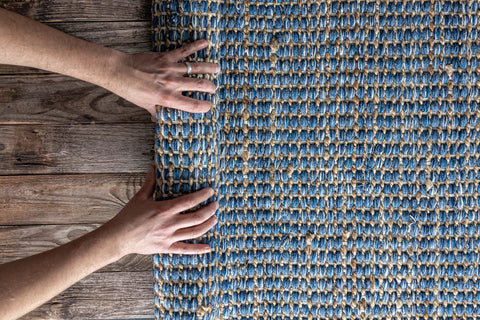In the vibrant heart of Brazil, where lush vegetation stretches across horizons and artisans' hands transform nature into art, natural textile fibers are experiencing a vibrant renaissance. No longer mere raw materials, these fibers have become integral to contemporary design, narrating stories of ancestral traditions, passed-down techniques, and a profound connection to the land. Whether you're seeking a design piece that speaks of forests and silences or wish to understand the materials reshaping the aesthetics of tropical living, join us on a journey through the most cherished natural textile fibers by Brazilian artists, uncovering their uniqueness compared to industrial counterparts.
What are natural fibers and how do Synthetic fibers differ from Natural fibers?
It's essential to begin with a fundamental distinction among the three major categories of textile fibers: natural, artificial, and synthetic. Understanding these differences not only aids in making more informed and sustainable choices but also helps in recognizing the origins of the materials that make the objects you choose for decorating your spaces unique.

Natural textile fibers
Natural fibers come directly from plant or animal sources and can be used with minimal mechanical processing. A characteristic of natural fibers is that they are highly breathable, hypoallergenic, and biodegradable—making them ideal for those seeking eco-friendly materials.
Artificial fibers
On the other hand, artificial fibers are derived from natural substances that have been chemically altered. For this reason, they cannot be considered entirely ecological, as the chemical transformation processes involved have a certain environmental impact. A typical example is viscose, which is made from wood or cotton cellulose, but undergoes chemical treatments to make it spinnable.
Synthetic fibers
Finally, synthetic fibers are products of industrial chemistry. They are created in laboratories and are made from synthetic polymers such as polyester, nylon, acrylic, or elastane. These fibers are chosen for their high durability, low cost, and ease of maintenance, but they are less breathable and more polluting than natural fibers. They are also sometimes responsible for releasing microplastics into the environment during washing.
The most beloved natural textile fibers in Brazilian design

Carnaúba Straw
Carnaúba straw comes from the leaves of the Copernicia prunifera palm, native to northeastern Brazil. Also known as the "tree of life" for its multiple uses, this palm grows spontaneously in the caatinga, a semi-arid biome where climatic conditions are often extreme, and rainfall is scarce. It is in this challenging environment that carnaúba develops its extraordinary characteristics, primarily its shine and resistance, making it particularly suitable for high-quality home accessories, rugs, bags, and other items. The processing of carnaúba straw also serves as a tool for economic empowerment for communities that often lack other stable and sustainable income opportunities.
Sisal
Sisal is a fiber obtained from the leaves of the Agave sisalana plant, a succulent native to Mexico. In Brazil, sisal is cultivated in a semi-arid region of the country, where the climate, considered one of the most complex in the world, favors its growth. Since the region has average annual rainfall below 300 mm and drought periods that sometimes last more than ten months, sisal is a particularly resilient fiber used in producing rugs, ropes, and other textile items. Its processing offers employment opportunities in rural areas, contributing to the economic development of local communities.
Cipó-Titica
Cipó-titica is a natural fiber extracted from an Amazonian vine, traditionally used to make woven baskets, rugs, and decorative structures. The true uniqueness of cipó-titica lies not only in its physical properties—flexibility, durability, and ability to maintain shape over time—but also in the cultural and environmental context in which it is harvested. Its extraction occurs exclusively by hand, selectively and respectfully of the ecosystem, often by indigenous communities who have inhabited the forest for centuries and understand its deep rhythms. Harvesting does not involve destroying the mother plant and follows traditional practices that ensure its natural regeneration.
Malva
In northern Brazil, Malva (Urena lobata L.) is a natural fiber similar to jute, cultivated in the floodplains of the Amazon, where few crops can adapt to the flooding regime. Completely free of chemical inputs, it is sown and processed directly on the riverbanks. Lightweight and durable, it is used in producing ropes, mats, and fabrics and represents a sustainable agricultural resource perfectly integrated with the local ecosystem.
Ramie
Ramie is a fine plant fiber derived from a plant similar to nettle. Used for millennia in the Far East, this fiber has found new life in Brazil, perfectly fitting into the sustainable design landscape. Appreciated for its silky luster and natural texture, ramie is used to make lightweight curtains, furniture coverings, and home textiles, thanks to its resistance to moisture, mold formation, and structural integrity over time. Its processing requires refined artisanal techniques that enhance its natural beauty.
Linen
Linen is a fiber obtained from the Linum usitatissimum plant. Primarily used for producing lightweight and breathable fabrics, it is valued for its ability to absorb moisture and its durability. In Brazil, linen is used to make tablecloths, curtains, and other home accessories. Cultivating linen requires a temperate climate and careful land management, making its production a sustainable and environmentally respectful practice.
Hemp
Hemp is a plant fiber derived from Cannabis sativa. Known for its robustness, it is used in producing durable and long-lasting fabrics. In Brazil, hemp is used to make rugs, bags, and other textile items. Hemp cultivation is eco-friendly, as it requires few pesticides and fertilizers and contributes to soil health. Additionally, hemp has thermal and acoustic properties, making it ideal for insulation in domestic environments.
Rubber
Rubber is a natural resin extracted from the Hevea brasiliensis tree. Primarily used for producing elastic items, it is also used in interior design to make rugs and other home accessories. Rubber production in Brazil is a tradition dating back to the colonial period, and its processing supports local economies in Amazonian regions.
Rattan
Rattan is a natural textile fiber obtained from a climbing plant belonging to the palm family. Particularly flexible, it is used to make furniture and accessories. In Brazil, rattan is appreciated for its lightness and resistance, making it ideal for tropical environments. Rattan processing is an art involving local artisans, preserving traditional techniques and promoting sustainability.
Bamboo
Bamboo is a plant belonging to the Poaceae family, characterized by rapid growth and a resistant structure. Used to make furniture, rugs, and other home accessories, bamboo is valued for its sustainability and versatility. In Brazil, bamboo is cultivated in various regions, and its processing offers employment opportunities in local communities. Bamboo fiber is also used in producing fabrics, thanks to its antibacterial properties and softness.
The importance of natural textile fibers against Poverty and Climate Crisis
When you choose a natural material, you're not just opting for a warmer and more authentic aesthetic; you're also participating in a tangible change.

In fact, it is estimated that over 500,000 people in Brazil rely on the processing of natural fibers for their livelihood—often without access to viable economic alternatives. In many rural areas, infrastructural challenges and the characteristics of the local ecosystem severely restrict other forms of development, making the natural fiber industry not only a resource but also a true lifeline for both economic and cultural survival.
The entire production chain—from the cultivation of plants like agave, bamboo, or carnaúba to the handcrafted transformation of the fiber—generates stable employment for thousands of families. In many communities, working with natural fibers is not just a profession; it is a cultural legacy that is passed down and reinvented, offering income, dignity, and a future.

But there's more: the use of natural fibers contributes significantly to reducing environmental impact. Because these materials are biodegradable and renewable, they help avoid pollution from microplastics and support agricultural practices that are more respectful of biodiversity. For example, crops like sisal require little water and are well-suited to arid climates, helping to combat desertification and improve soil health. Choosing natural fabrics over synthetic alternatives—understanding what are natural fibers and where natural fibers come from—isn’t just a design preference; it’s an ethical decision.
Conclusion
The renaissance of natural textile fibers in Brazilian design is far more than a passing trend—it is a deep rediscovery of roots, of raw materials, and of the meaning every crafted object can carry.
Explore the finest Brazilian natural fiber textiles at Tropicalistic and embrace an aesthetic that speaks the language of nature—while also honoring craftsmanship, biodiversity, and respect for the land.




Comments (0)
There are no comments for this article. Be the first one to leave a message!